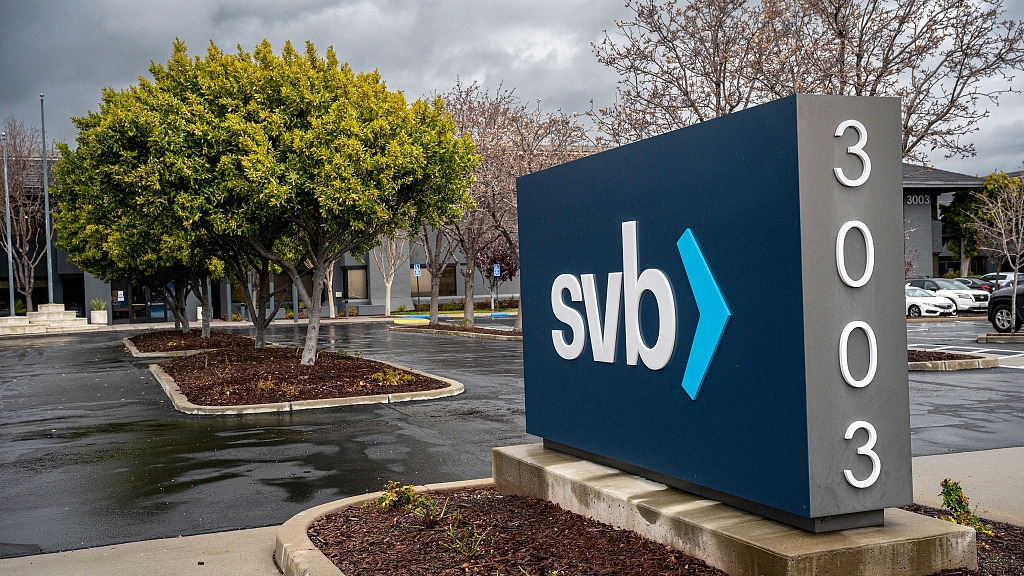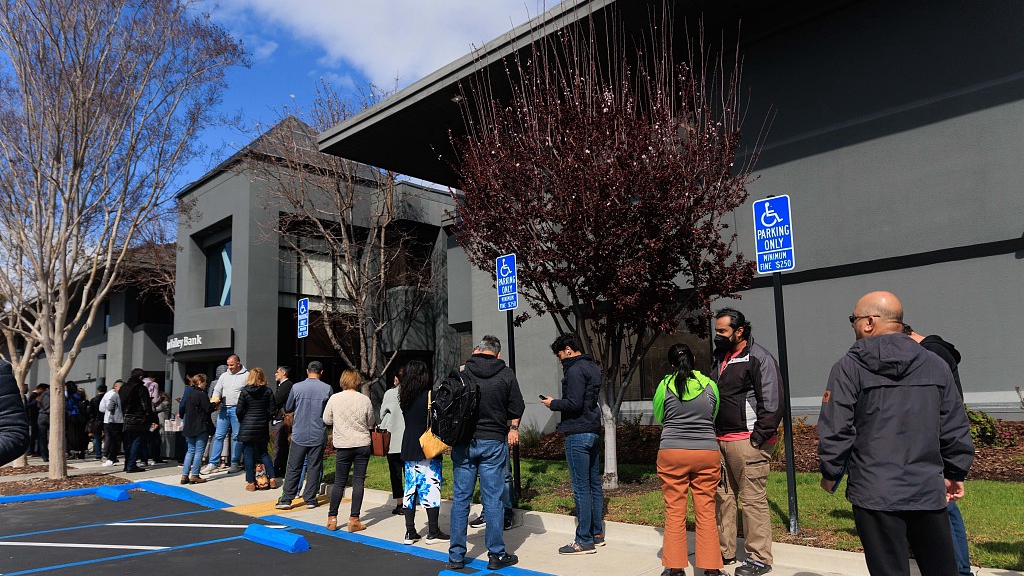
Signage outside Silicon Valley Bank headquarters in Santa Clara, California, U.S., March 9, 2023. /CFP
Signage outside Silicon Valley Bank headquarters in Santa Clara, California, U.S., March 9, 2023. /CFP
Startup-focused lender Silicon Valley Bank (SVB) is the largest bank to fail since the 2008 financial crisis and the second-largest bank failure in U.S. financial history. Here is a brief review of how it happened.
The lender was ranked as the 16th biggest in the U.S. with approximately $209 billion in total assets and about $175.4 billion in total deposits as of the end of 2022.
California banking regulators closed the 40-year-old bank and appointed the Federal Deposit Insurance Corporation (FDIC) as receiver for the later disposition of its assets on March 10.
Hungry for cash
Analysts say that the front and center reason for the bank's abrupt collapse is the Fed's aggressive interest rate hikes in the last year.
Higher interest rates caused the market for initial public offerings to shut down for many startups and made private fundraising more costly.
SVB "primarily banks technology, life science, and healthcare companies and is an integral part of the venture capital ecosystem," Morgan Stanley said, adding that the heavy concentration in client profile put the bank at risk.

People wait outside the Silicon Valley Bank headquarters to withdraw funds, Santa Clara, California, U.S., March 13, 2023. /CFP
People wait outside the Silicon Valley Bank headquarters to withdraw funds, Santa Clara, California, U.S., March 13, 2023. /CFP
SVB sold a $21 billion bond portfolio consisting mostly of U.S. Treasuries on Wednesday at a loss of $1.8 billion to fund the redemptions, but it failed to stop a run on deposits.
Customers began withdrawing funds en masse as many of them held more than the $250,000 that is reimbursed from U.S.-insured institutions.
For example, online gaming firm Roblox says it has about $150 million in SVB, and digital media firm Buzzfeed said a majority of the company's $56 million in cash was with the bank.
Clients tried to pull $42 billion from the bank on Thursday, before the bank's eventual fall on Friday.
After days of scrambling to avert a broader financial knock-on effect with other institutions, U.S. financial authorities announced a rescue plan Sunday night to ensure all depositors at failed SVB will be able to "fully" retrieve their funds.
Broader problem
SVB's failure has focused attention on the risks to financial institutions from the Federal Reserve's aggressive policies to counter inflation.
Bonds lose value when yields rise in a high-rate environment. U.S. benchmark 10-year yields surged by more than 200 basis points last year and almost 40 basis points in February alone on renewed rate-hike bets.
Banks are not required to immediately recognize paper losses on a bond, allowing some of these risks to slumber on their books.
At the end of 2022, banks had some $620 billion in "unrealized losses" connected to these securities, according to the FDIC.
In Britain, HSBC bought the UK arm of Silicon Valley Bank for a symbolic one pound on Monday, rescuing a key lender for domestic technology startups.
Traders no longer expect a rate hike of 50 basis points by the U.S. Federal Reserve next week as the surprise collapse of SVB rattles the financial system.
(With input from AFP, Reuters)